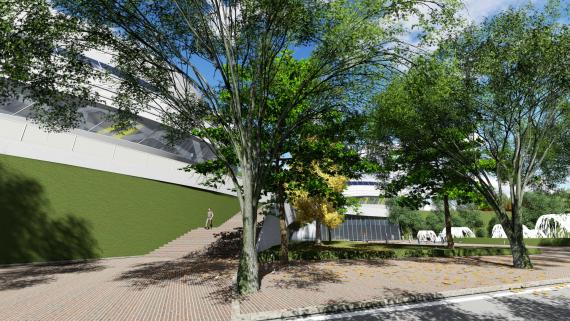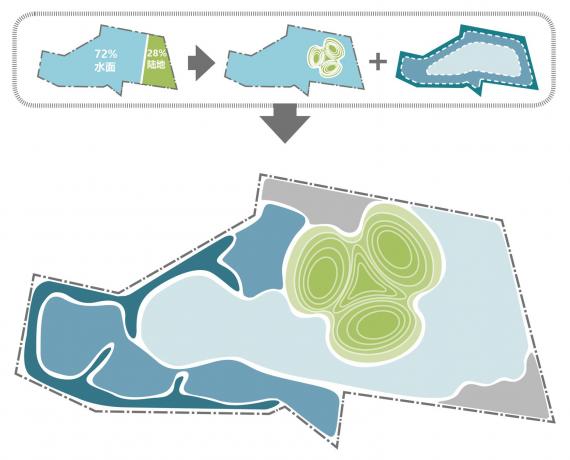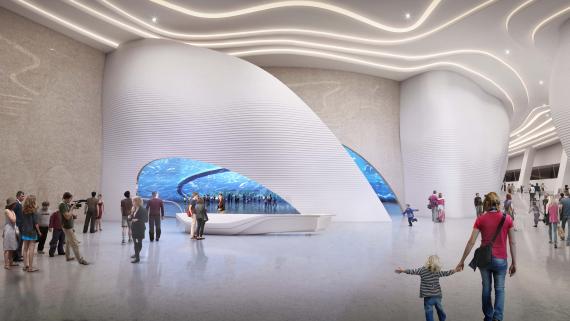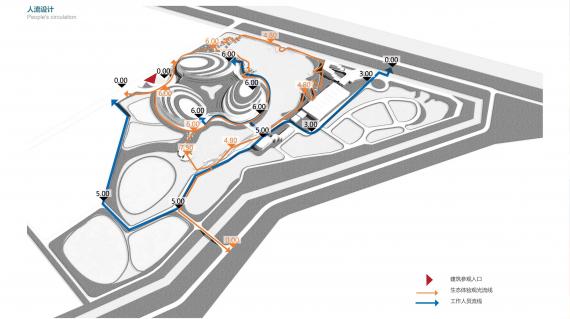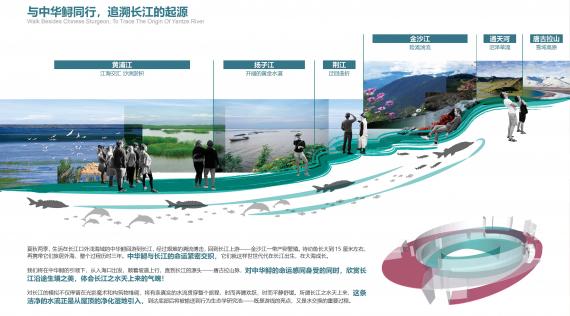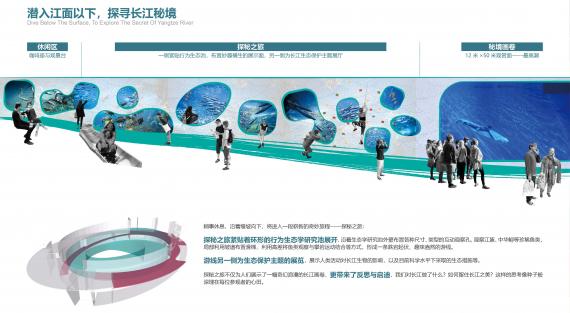Arch deepening design of Chinese Sturgeon Nature Reserve by Obermeyer
OBERMEYER and other international companies participated in the international bidding of the Yangtze River Estuary Chinese Sturgeon Nature Reserve Phase II Project. OBERMEYER has outstanding performance in building function, form, landscape, water treatment, technology, economy, energy saving and so on, and gained great recognition from experts. Meanwhile, from the comprehensive comparison of the accuracy, economy and feasibility of the functional positioning of the scheme, Obermeyer was finally selected as the company of architectural deepening design and implementation plan. As to meet the investment needs and implement the design with an international vision and advanced design idea, and complete it.
Shanghai Chongming Island is China's largest estuary alluvial island, and the Yangtze River gateway. The project is located in Yingdong Village, Chenjia Town, Chongming District, Shanghai, with a planned area of about 175158 Sqm. Planning and construction of life Yangtze River Pavilion, scientific research building, staff on duty supporting, outdoor various types of conservation pools ,ecological wetlands and other facilities. The base will become a landmark of specialized aquatic organisms "world-class ecological island"
Design Concept
In the planning and design of the base of the Chinese Sturgeon Nature Reserve, we take the culture of the Yangtze River and both sides of the Strait as the source of design inspiration, take the Chinese philosophical thought of "harmony between man and nature" as the guiding ideology, take ecology, harmony and inheritance as the design concept, and take architectural aesthetics and architectural technology as the design means. Draw up a beautiful, harmonious, ecological and intelligent imagines for the base.
The harmonious ecosystem is the prerequisite for the survival and breeding of Chinese Sturgeon and finless porpoise, and the design adheres to the ecological principle. Taoist natural Chinese traditional philosophy, design advocates the principle of harmony. Running to the Yangtze River, jumping the pulse of Chinese civilization, inheriting Chinese culture, continuing to write the legend of the Yangtze River The design of the base bears the principle of inheritance
Overall Planning
The overall planning of this project is a natural ecological park with the theme of science popularization, ecological experience, ecological research, rescue and cultivation. Clear planning zoning and non-interference streamline design are the necessary conditions to protect the efficient operation of the base. Use the base resources effectively, plan the building functions intensively, design with the principles of the use of new technology, new materials, intelligent, sustainable, green building.
Functional Partition
The overall plan is to build the Yangtze River Life Stadium, Scientific Research Zone, Staff Living Complex Zone and Outdoor Protection and Domestication Zone. The three major zones of the Yangtze River Life Museum, namely, behavioral ecology research area, dolphin rescue and conservation area and sturgeon breeding area, have a clear division of labor. Among them, behavioral ecology research area not only has research and rescue functions, but also undertakes the function of external propaganda and education. The new scientific research building and staff life supporting are integrated with the original functional buildings to realize the integrated and intensive design of scientific research building and life supporting. Outdoor area integrates the functions of conservation, ecology (experience) and landscape, and forms an ecological complex, which conveys ecological knowledge, natural beauty and sense of mission to protect the environment.
Streamline Analysis
The inner streamline of the park enters through the first stage entrance on the east side of the base to the scientific research building, the living building or the Yangtze River Life Hall.
Entering the behavioral ecology research area of the Yangtze River Life Hall through the Plaza on the north side of the base will open up three wonderful journeys or walk around the Plaza along the wetland around the lake to appreciate the stories of the Yangtze River. The dolphin rescue and breeding areas and the Chinese sturgeon culture and breeding areas are only open to professional researchers. Ring three major venues function area, set up ring lane, to meet the needs of transportation and fire protection of aquatic organism.
Exhibits Arrangement
On the journey of time, we traveled with the Chinese sturgeon and the finless porpoise. In the behavior ecology area, we will combine the exhibition of Chen and the ramp to design three wonderful journeys. The first journey: the journey to the source, the second journey: the journey of science, the third journey: the journey of exploring.
The three journeys not only show people a fantastic and romantic picture of the Yangtze River, but also bring reflection and Enlightenment on how to retain the beauty of the Yangtze River and inherit Chinese culture from generation to generation.
Landscape Design
We design the protection base of Chinese sturgeon as an ecological park. 72% of the water surface has more cultural connotation and landscape value. The design source comes from the inexhaustible theme of "Yangtze River". As the mother river of the Chinese nation, the Yangtze River natures Chinese People from both sides for generations, flowing through Qinghai, Tibet, Sichuan, Yunnan, Chongqing, Hubei, Hunan, Jiangxi, Anhui, Jiangsu, Shanghai and other nine provinces, a local cultural system with national characteristics. We summarize and refine the representative sectional characteristics of the basin and combine the design theme of "island" to outline the seven landscape islands of ice island, waterfall island, flower island, mountain island, lake island, land island and sand island, which vividly reproduces the vast natural and cultural features of the Yangtze River Basin.
Rich and diverse wetland habitats form a natural ecosystem with the ability of self-restoration and self-purification, which not only creates natural beauty, but also provides rich and colorful hydrophilic experience for tourists, as well as habitat for a variety of organisms, including birds.
The rolling Yangtze River, from high mountains to the sea, from ancient times to the future, cultivated a broad and profound Chinese culture, achieved a wise oriental philosophy system, and the history of human development has proved once again that "harmony between man and nature" is a wise choice for survival and reproduction.
